Cane and Bamboo Crafts of Manipur
- Part 12 -
By: Mutua Bahadur *
MISCELLANEOUS
In the rural areas, bamboo bridges are built across small streams and rivers for passage to and fro. One particular type of bamboo bridge which still forms part of a typical rural scene is the Urokthong (Urok = Egret, thong = bridge). These are slightly humped bridges constituting of only one long bamboo pole acting as catwalk, which allows for a single person to cross at a time, and a single bamboo railing that acts as hand-support for maintaining balance.
In most cases, the Urokthong is built at a height of 8 metres or more above the ground level, or water-bed level. Suspension bridges made of cane used to be the sole mode of passage across ravines and mountain streams in earlier days. People in the valley construct bamboo Thonggra or scaffold-like structure on the edge of ponds, and extending a little into the water but just above the water-level, for bathing; for washing clothes; and for fetching water from the pond.
Many of the parts for the Khwang-eeyong (Loin loom), Paang-eeyong (Fly-Shuttle loom), etc. are made of bamboo. Some of them are Nayetchei (small bamboo rod), Utong (a short bamboo tube), Shunachei, Na-oong-khok (a long bamboo tube), Haang-laak-chei, Nachei Shing Mit and Kanam Karanchei.
Tareng (spinning machine), Taa-oat (hand-machine for winding thread) are made with a mixture of wood and bamboo. Shamjet, an instrument used for making cloth on loin-looms, is made of a long bamboo split that is made smooth and polished for the purpose. The stands for the Paang-eeyong are often made of bamboo. At Kwatha, and in some other hilly areas, cut bamboo pieces are improvised as the Paangngatem.
Practically every Meitei home in the rural areas have Konthongs or gates made with bamboo, and fences constructed with bamboo poles and bamboo splits. Bamboo combs (Fig.98) with tiny finely-chiselled teeth were of common use in Manipur until recent times. However, it is practically out of use now, being replaced by plastic combs. But the combs offered to the Deities for rituals, ceremonies, etc. are still made of bamboo.
These bamboo combs are available plentifully at the Women's Market. In the hills; some of the tribal groups still use bows and arrows made of bamboo. Meiteis too use bamboo bows and arrows, but for ceremonial purpose only, on the occasion of Ipan-thaba (ceremony for a newly-born baby on the sixth day). Cut bamboo pieces and bamboo roots are used for making the Hidaakpu (Fig.97) and Kangchup (smoking-pipe or Hookah).
Sound-producing objects made from bamboo pieces are hung up in the paddy-fields to ward off birds. The hung bamboo pieces are attached to strings and produce sounds that scare away the birds. The tribal people living in the Senapati District use a pitchfork made of bamboo with which the paddy is threshed to separate the grain from the plant (Fig.99).
Certain toys that children play with, viz., Pishkari or toy water-pump, toy wind sails, etc. are made of bamboo. Tables, chairs, seats, etc. made of cane are used profusely. In earlier days, tribal people used war-shields made of cane.
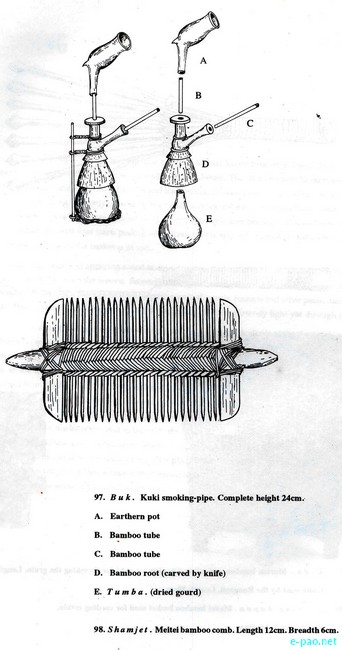
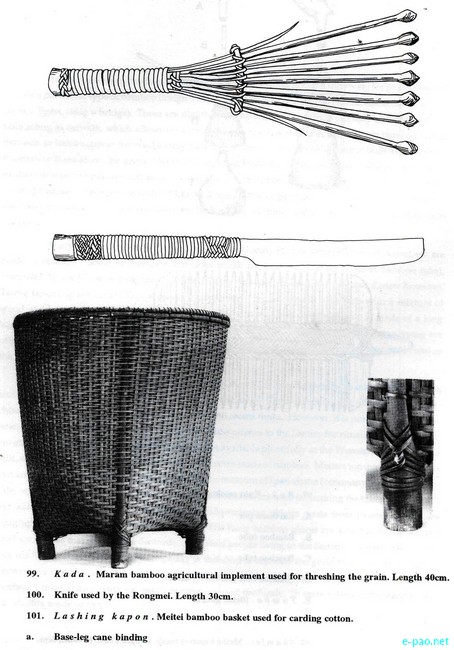
COATING
On completion of making the baskets, a final procedure of coating them with certain ingredients is administered to some particular type of baskets. The Grain Storage Baskets used in the hills and in the valley; the Measuring Baskets and the Circular Baskets used in the valley, etc. are coated with a layer of cow-dung, properly done with the hand, only after the purchase has been made. The baskets so coated are kept in the sun and are allowed to dry properly before being put to actual use. In due course of time when this first coat starts peeling off, a fresh coat is applied to renovate the basket. This process is repeated as long as the basket is in use.
The benefit of applying a coat of cow-dung on the basket is two-fold: Firstly, it helps to cover up the holes in-between the weave. Secondly, it helps to strengthen the baskets. The coat of cow-dung applied on to the Grain Storage Baskets helps to ward off insects, rodents and other pests, including small birds. The layer of cow-dung so applied, when dried, offers a relatively light yet through coat.
A second indigenous method of coating is to ground the bark of the Sahi-Kuhi tree (Pasania Pachyphylla) into paste, thereby extracting a juice which is then applied as a coating for the baskets. The tribal groups of Senapati District treat baskets with smoke for long periods in order to give a shiny black gloss to the outer surface of the baskets.
People in the valley apply a coat of Khe, a waxy substance extracted from the Khe tree (Melanorrhoea Vsitatta, Wall), on the baskets so as to strengthen them and also to make them water-proof. These Khe trees are abundantly available in the areas bordering Manipur and Myanmar.
Some of the tribal groups apply cow's urine to the baskets with an idea of enhancing the several colours of the bamboo, and to beautify the baskets. The Paomai tribe of Senapati District use a basket known as Phou, made either with cane or bamboo, which is utilized in the preparation of rice-beer. After making the baskets, the seeds of the Dari plant (used by the Paomai) are pounded to prepare a substance with which the Phou is thoroughly coated to make it water-proof. The basket is put to use after the wet coating is sufficiently dried in the sun.
DYEING
The craftsmen of Manipur, especially those belonging to the Maring tribe, traditionally employ the practice of dyeing colours on bamboo. The traditional method of dyeing black colour on bamboo is as follows : The bark of the Shahi-Kuhi tree is pounded into paste and then boiled in water contained in a big vessel.
After the mixture is sufficiently boiled, fine bamboo splits or payas kept ready for the purpose are dipped into the vessel while the mixture is still boiling-hot. The dipped payas are then taken out and buried under mud. Usually a shallow pit is dug and filled in with slimy mud for the purpose. The reason for this is to make the dye stick fast on to the bamboo.
Sometimes, too, the dye preparation contained in the vessel is poured into the pit wherein the dyed bamboo splits are buried, and the pit is then covered up with a fresh patch of mud. The dyed bamboo splits are kept under the mud for a minimum of half an hour to a maximum four or more days, depending on the requirement for the bamboo.
The longer the dyed bamboo splits are buried, the better it is for making the dye firm. An interesting thing is that even among the Marings, there are different methods of dyeing the black colour. A section of the Marings boil a mixture of Yaiyo (a vine), Heibung (Garcinia Zanthochymus), and barks of the Shahi-Kuhi tree to prepare the black-colour dye with which the payas are dyed. The process of burying the dyed bamboo splits is, however, the same as mentioned above.
The Maring women who wear phaneks, or the lower garments wrapped around the chest use a cane belt, which is dyed with a red colour, to prevent the garment from slipping off. The cane belt is known as Ratai. The process of preparing the red-colour dye is the same as in the case of the black-colour dye, but the ingredients are different. The red-colour dye is prepared from a mixture of Kheilang (a creeper),Napu, Chorlung (small plants) and Heibung, which are boiled together in a vessel for the purpose.
PRESERVATION
For people using bamboo baskets, it is quite important to take up appropriate preservation methods, especially preventive measures against getting spoiled by Stem Borers, so that the baskets may be of use for long periods. In order to accomplish this, the native craftsmen take good care to harvest the required bamboo during Mera-Poinu (Oct.-December) when it is just the right time to cut down the bamboo.
After harvesting the necessary quantity, the bamboo is cut up approximately to meet the various needs and is then stored by for use later on. At times, people cut half-way through the stem of a bamboo plant and leave it in a fallen position without actually cutting off the stem. This is done purposely so that the substance present in the bamboo plant can flow out.
It is kept in this position for quite some time, till the substance has been sufficiently drained. Sometimes, too, people in the valley cut down the bamboo plants and after knifing off the outer layer or skin, the bamboo stems are then leaned against Y-shaped branches of trees. In the hills, too, people cut down long bamboo stems and then stick them into the ground in an inclined/oblique position. This is done so that the substance in the bamboo stems can flow out smoothly. Bamboos minus such substances are essential for making products that will last for a long time.
In the valley, the practice of soaking whole bamboo stems as well as bundles of fine bamboo splits or payas by immersing them in water (usually in ponds and in brooks) for a few months, is prevalent. The reason for this is that by doing so the sugary substance present in the bamboo is seeped out by the water, and this naturally safeguards the bamboo from insects and the like. Besides, a second purpose is to rot the bamboo so that it becomes foul-smelling. This is done to ward off the pests.
The bamboo thus relieved off the substance, and so rotten, is thereby conditioned from getting spoiled. Another benefit for soaking the bamboo in water is that it strengthens the bamboo, besides warding off the pests. Certain craftsmen mix cow-dung to the water in which the bamboo is being wetted; thus rottening the water to a desired level. According to them, this makes it possible to wet the bamboo for a few days only, instead of the usual practice of wetting the bamboo for months altogether.
The fine bamboo splits, that are used for making baskets and other items, are spread out on the Lup and exposed to smoke, for some months, for conditioning and to make them immune to Stem Borers. Baskets made with such smoked bamboo splits usually do not get spoiled. Baskets made from bamboo that are cut before the right time, are treated with cow's urine as insulation against beetles. The baskets treated with cow's urine are then placed on the Lup and exposed to smoke till they dry out completely. This safeguards the baskets from getting spoiled. People in the hills sometimes keep baskets stored up on the Lup for year's altogether.
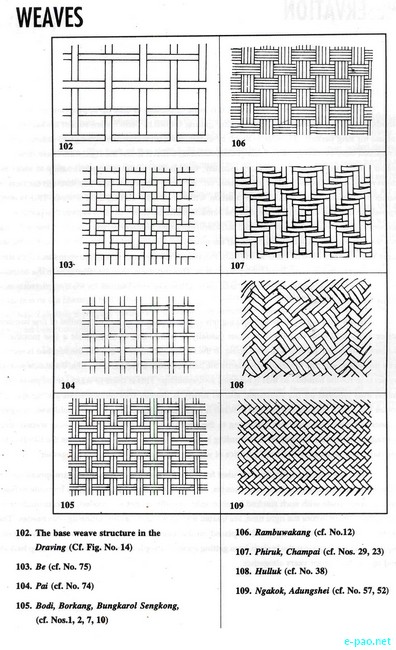

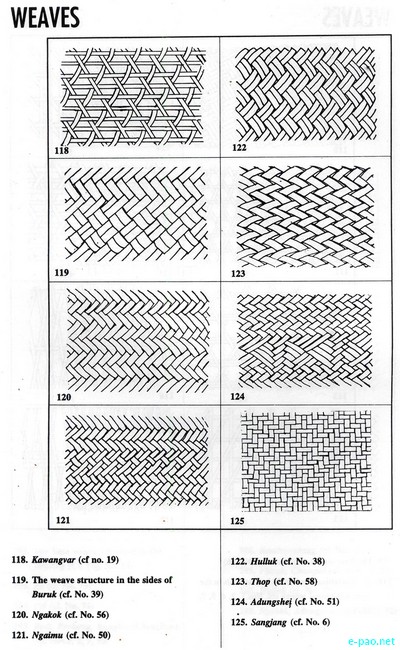
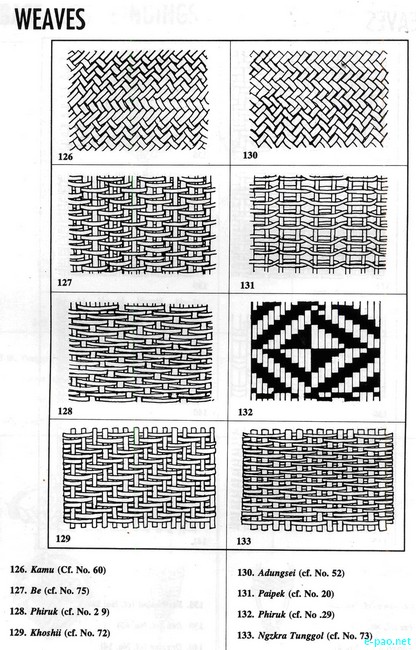
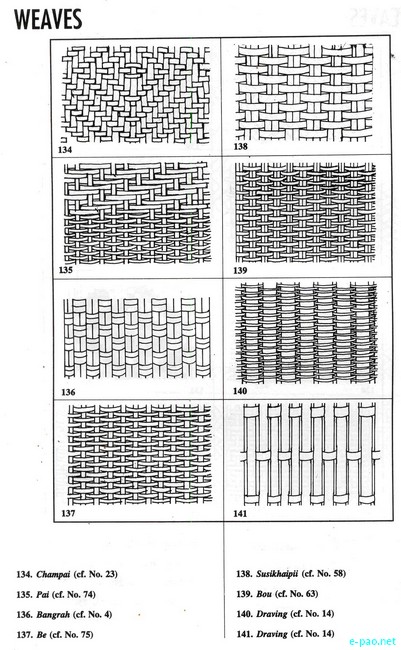
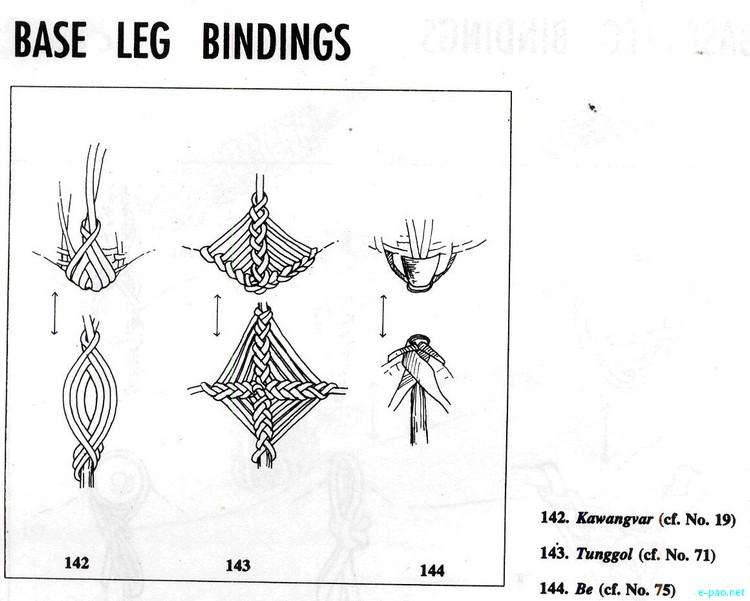
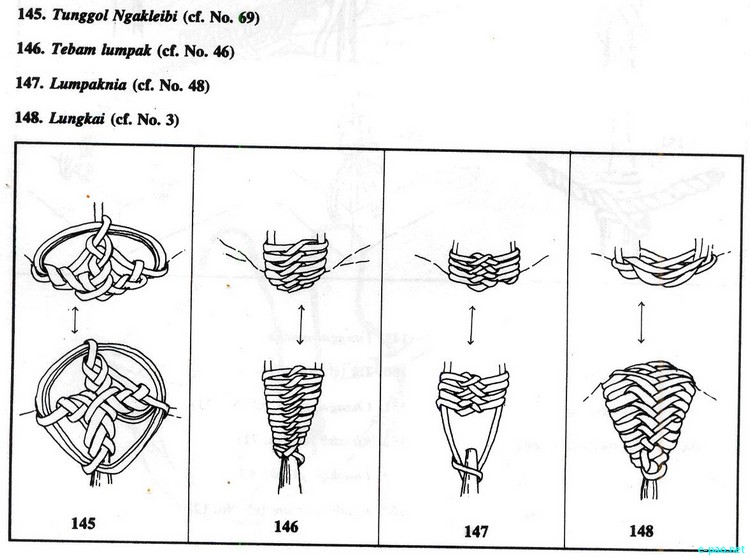
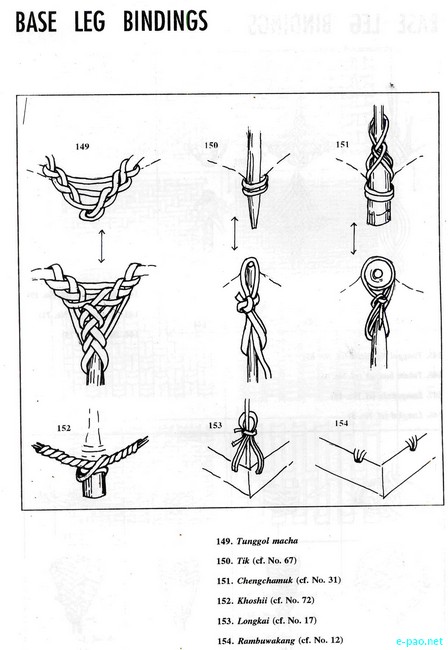
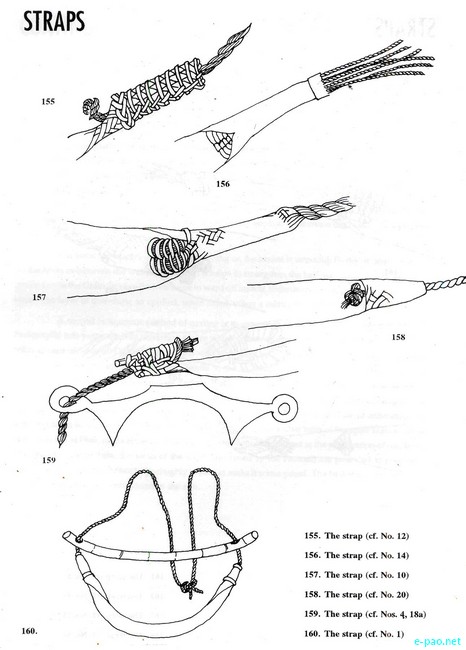
See a gallery photo of Cane and Bamboo Crafts of Manipur here.
Concluded ....
|
* Mutua Bahadur contributes to e-pao.net regularly. This article was webcasted on January 31, 2012.
* Comments posted by users in this discussion thread and other parts of this site are opinions of the individuals posting them (whose user ID is displayed alongside) and not the views of e-pao.net. We strongly recommend that users exercise responsibility, sensitivity and caution over language while writing your opinions which will be seen and read by other users. Please read a complete Guideline on using comments on this website.









